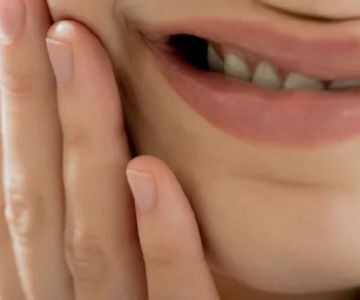What is Oral Lichen Planus?
Oral lichen planus (OLP) is a chronic condition that affects the mucous membranes inside the mouth. It can cause various symptoms, including white patches, ulcers, and pain. But is it related to autoimmune diseases? The answer is yes – OLP is considered an autoimmune disorder, meaning that the body’s immune system mistakenly attacks its own tissues. In this article, we’ll explore the connection between oral lichen planus and autoimmune diseases, its symptoms, causes, and potential treatments to help you manage the condition effectively.
The Link Between Oral Lichen Planus and Autoimmune Diseases
To understand why oral lichen planus is classified as an autoimmune disease, it’s essential to understand how the immune system functions. The immune system is designed to protect the body from foreign invaders like bacteria, viruses, and toxins. However, in autoimmune diseases, the immune system becomes overactive or malfunctioning, and it begins attacking healthy cells in the body.
In the case of oral lichen planus, the immune system mistakenly targets the mucous membranes in the mouth. This leads to inflammation, the formation of white patches, and sometimes painful ulcers. It’s a condition that can affect anyone, but it’s more common in middle-aged adults, especially women. The exact cause of OLP is unknown, but several factors contribute to its development, including genetic predisposition and immune system dysfunction.
Symptoms of Oral Lichen Planus
Oral lichen planus often presents itself through a variety of symptoms. These can vary from person to person, but common symptoms include:
- White, lacy patches inside the mouth
- Painful ulcers or sores
- Burning sensation or sensitivity in the mouth
- Dry mouth or difficulty swallowing
- Red or swollen gums
In some cases, OLP can also cause lesions on the tongue, inside the cheeks, or on the roof of the mouth. The condition can lead to discomfort, especially when eating certain foods. Although OLP is not contagious, it’s crucial to seek medical advice if you experience symptoms, as early diagnosis can help manage the condition more effectively.
What Causes Oral Lichen Planus?
The exact cause of oral lichen planus is still not completely understood. However, several factors are believed to play a role in triggering or worsening the condition:
- Immune System Dysfunction: Since OLP is an autoimmune disease, an overactive immune response is central to its development.
- Genetic Factors: A family history of autoimmune diseases may increase the risk of developing OLP.
- Infections: Certain viral infections, including hepatitis C, have been linked to an increased risk of OLP.
- Medications: Some medications, such as antihypertensives or diuretics, may trigger OLP symptoms in susceptible individuals.
- Environmental Triggers: Stress, tobacco use, and certain foods may exacerbate the condition.
Despite these potential triggers, it’s important to note that the exact cause of OLP remains largely unknown, and more research is needed to fully understand its origins.
Treatment Options for Oral Lichen Planus
Although there is no cure for oral lichen planus, several treatments can help manage symptoms and improve the quality of life for those affected. Treatment options vary based on the severity of the condition, but some common methods include:
- Topical Corticosteroids: Steroid creams or ointments are commonly prescribed to reduce inflammation and relieve pain in mild cases of OLP.
- Immunosuppressive Drugs: In severe cases, medications that suppress the immune system may be used to reduce inflammation and prevent the immune system from attacking healthy tissues.
- Topical Pain Relief: Oral rinses or gels containing numbing agents, like lidocaine, can provide temporary relief for painful sores.
- Oral Hygiene: Maintaining excellent oral hygiene can help prevent further irritation and infection in the mouth. It’s essential to use gentle toothbrushes and non-alcoholic mouthwashes.
- Dietary Adjustments: Avoiding spicy, acidic, or abrasive foods that could irritate mouth sores is recommended.
In some cases, alternative treatments such as herbal remedies or acupuncture may also provide relief, although it’s essential to consult a healthcare professional before pursuing these options.
Managing Oral Lichen Planus
While managing oral lichen planus can be challenging, taking the right steps can help keep the condition under control and improve the quality of life. Regular dental check-ups are crucial, as your dentist can monitor your oral health and help prevent complications such as infections or tooth loss. Moreover, incorporating stress management techniques, such as yoga or meditation, can help reduce flare-ups associated with stress.
If you suspect that you may have oral lichen planus or if you experience persistent oral discomfort, it’s important to schedule an appointment with a healthcare professional. Early diagnosis and treatment can help minimize symptoms and reduce the risk of long-term complications.



 Westgate Dental Arts3.0 (2 review)
Westgate Dental Arts3.0 (2 review) Coventry Family Dental4.0 (247 review)
Coventry Family Dental4.0 (247 review) Familia Dental3.0 (1028 review)
Familia Dental3.0 (1028 review) Dr. Daniel S. Fife, DDS4.0 (31 review)
Dr. Daniel S. Fife, DDS4.0 (31 review) Dentistry At Suburban Square: Michael I. Wollock, DMD4.0 (1228 review)
Dentistry At Suburban Square: Michael I. Wollock, DMD4.0 (1228 review) Comfort Care Dental4.0 (1156 review)
Comfort Care Dental4.0 (1156 review) The Importance of Oral Health Education During Pregnancy for a Healthy Pregnancy
The Importance of Oral Health Education During Pregnancy for a Healthy Pregnancy Why Skipping Dental Checkups Can Lead to Bigger Oral Health Problems
Why Skipping Dental Checkups Can Lead to Bigger Oral Health Problems Best Tips for Brushing Your Teeth Properly for Healthy Gums: Essential Techniques for Oral Health
Best Tips for Brushing Your Teeth Properly for Healthy Gums: Essential Techniques for Oral Health Advantages of Porcelain Dental Restorations
Advantages of Porcelain Dental Restorations How Can Diabetes Cause Tooth and Gum Problems? Preventing and Managing Oral Health Issues
How Can Diabetes Cause Tooth and Gum Problems? Preventing and Managing Oral Health Issues Healthy Habits for Promoting Good Oral Health and Hygiene: Tips for a Healthy Smile
Healthy Habits for Promoting Good Oral Health and Hygiene: Tips for a Healthy Smile